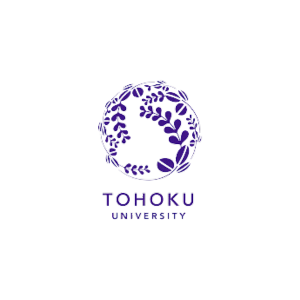JAPAN
Overview of the Japan
Japan, an island nation in East Asia, is located in the Pacific Ocean off the eastern coast of the Asian continent. It comprises four main islands—Honshu, Hokkaido, Kyushu, and Shikoku—and numerous smaller ones. The country enjoys a temperate climate with four distinct seasons, from cold winters in the north to hot, humid summers in the south. Japan is known for its rich cultural heritage, advanced healthcare system, and efficient public transportation network, including bullet trains and extensive subway systems.

Japan boasts world-class infrastructure and ranks highly in global indices for quality of life, technology, and economic competitiveness. The nation is considered safe for immigrants, offering various opportunities in sectors like technology, education, and manufacturing. Its strict safety regulations and high living standards contribute to a welcoming environment for expatriates, though language barriers can be a challenge. Overall, Japan’s robust infrastructure and economic opportunities make it an attractive destination for global talent.
Percentage Distribution of Non-Immigrant Student Visa Holders in Japan by Country (2014-2023)
Percentage Distribution of Non-Immigrant Visa Holders in Japan by Country (2014-2023)
VISAS
Climate and Seasons

SPRING
March to May
Minimum: 5°C
Maximum: 20°C

SUMMER
June to August
Minimum: 20°C
Maximum: 35°C

AUTUMN
September to November
Minimum: 10°C
Maximum: 25°C

WINTER
December to February
Minimum: -5°C
Maximum: 10°C
WHY STUDY IN JAPAN?
Studying in Japan offers a unique blend of high-quality education, cultural immersion, and innovation. Renowned for its prestigious universities and cutting-edge research, Japan provides students with opportunities to engage in advanced studies across various fields, including technology, engineering, and business. The country’s commitment to research and development fosters a dynamic learning environment, while its rich cultural heritage offers an enriching experience both inside and outside the classroom. Additionally, Japan’s safe and clean cities, efficient public transportation, and friendly locals create an ideal living environment for international students. The opportunity to learn Japanese and immerse oneself in a diverse and vibrant culture further enhances personal growth and global perspectives. Studying in Japan not only equips students with valuable academic knowledge but also offers a transformative life experience, making it a compelling choice for higher education.
COURSES
Computer Science
Business Analytics
MBA
Mechanical Engineering
Major Courses Opted by Students (2014-2023)

Test Preparation at PVR Global Educational Services
PVR Global Educational Services offers tailored training for GRE, IELTS, PTE, SAT, GMAT, and Duolingo tests. Expert instructors provide personalized study plans, practice materials, and mock exams to boost proficiency in reading, writing, listening, speaking, and quantitative skills. Flexible scheduling and comprehensive support help students achieve high scores and succeed in their academic and professional endeavors.
Quick Facts about Japan
Japan boasts world-class universities and research institutions, offering top-notch education in diverse fields such as technology and humanities.
Students can immerse themselves in Japan’s rich cultural heritage, experiencing traditional festivals, cuisine, and historical sites
Learning Japanese enhances academic and professional prospects, and many universities offer Japanese language courses for international students
Japan is known for its cutting-edge research and development in fields like robotics, engineering, and environmental science.
Japan consistently ranks as one of the safest countries, with low crime rates and excellent public health and safety measures
Students benefit from studying in a tech-savvy environment with access to the latest technology and innovation in various sectors
Japan’s public transportation system is highly efficient, with punctual trains and buses making travel convenient and reliable for students
Courses Opted by Indian Students in Japan (2014-2023In Percentage)
Education System in Japan
Education in Japan is compulsory from ages 6 to 15, covering elementary (6 years) and junior high school (3 years).
Grade System:
Grades are typically from 1 to 6 in elementary and 7 to 9 in junior high, with letter grades in high school.
Duration:
Elementary (6 years) and junior high (3 years), followed by senior high school (3 years).
Average Fee:
Fees are relatively low, around ¥30,000 to ¥60,000 annually for public schools; private schools are more expensive.
Tertiary education includes universities and specialized schools, focusing on vocational skills and higher academic degrees.
Grade System:
Grades are awarded in letter format (A, B, C) and numerical format, with GPA calculations for performance evaluation.
Duration:
Typically 2 years for specialized schools and 4 years for undergraduate degrees at universities.
Average Fee:
Public universities cost around ¥500,000 to ¥800,000 annually; private universities are higher, approximately ¥1,000,000 to ¥2,000,000.
Undergraduate programs in Japan provide comprehensive academic and practical training, preparing students for professional careers or further studies.
Grade System:
Grades are based on a letter system, with GPAs calculated on a 4.0 scale or similar system.
Duration:
Typically 4 years for most bachelor's programs.
Average Fee:
Public universities charge around ¥500,000 to ¥800,000 per year; private universities range from ¥1,000,000 to ¥2,000,000.
Master's programs offer advanced study in specific fields, focusing on specialized knowledge and research skills for professional or academic careers.
Grade System:
Grades follow a letter or numerical system, contributing to a cumulative GPA for course assessments.
Duration:
Usually 2 years, with some programs extending to 3 years.
Average Fee:
Public universities cost about ¥500,000 to ¥800,000 annually; private universities are around ¥1,000,000 to ¥1,500,000.
Doctoral programs focus on original research and contribute to academic or professional advancements in specialized fields.
Grade System:
Grades are evaluated through research progress and thesis submissions, typically without a formal grading scale.
Duration:
Typically 3 to 5 years, depending on the research and thesis requirements.
Average Fee:
Public universities charge approximately ¥500,000 to ¥800,000 per year; private universities can cost between ¥1,000,000 and ¥1,500,000.

Identifying the Right Institution
Evaluate a university’s global and national rankings, research output, faculty qualifications, and academic achievements to gauge its reputation and quality.
Check if the university offers strong programs in your field of interest, with diverse courses, specialization options, and industry connections.
Look for universities with robust research facilities, opportunities for student research, and collaboration with industry or international institutions.
Assess the qualifications, experience, and research achievements of faculty members to ensure you receive high-quality education and mentorship.
Consider the quality of campus facilities, including libraries, laboratories, housing, and recreational amenities that support a comprehensive educational experience.
Review the university’s global partnerships, exchange programs, and collaborations with other international institutions for broader educational and cultural experiences.
Evaluate available support services like academic advising, career counseling, language assistance, and student organizations to enhance your overall university experience.
No of Students placed in different sectors (2014-2023)
Success Rate of Indian Students in the Japan by Sector (2014-2023In Percentage)
Getting a Japan Visa
Identify the appropriate visa type based on your purpose, such as student, work, tourist, or business. Each visa has specific requirements and conditions for entry into Japan.
Review the visa requirements on the Japanese embassy or consulate website. Ensure you meet criteria related to finances, purpose of visit, and any special documentation needed for your specific visa type.
Collect necessary documents including your passport, visa application form, photographs, and any supporting papers like admission letters, financial statements, or employment contracts, based on the visa type.
Register on the online visa application portal if required. Create a user account to track your application, upload documents, and receive updates on the status of your visa request.
Fill out the visa application form accurately online. Provide personal information, details about your trip, and any additional required information. Double-check for errors before submission.
Pay the applicable visa application fee using the accepted payment methods. The fee varies depending on the type of visa and duration of stay. Keep the payment receipt for reference.
If biometrics are required, visit a designated center to provide fingerprinting, facial recognition, or other biometric data. This step is essential for certain visa categories and security checks.
Attend a visa interview at the embassy or consulate if requested. Be prepared to answer questions about your travel plans, background, and reasons for visiting Japan. Provide clear and honest responses.
After submission, wait for the processing time to complete. Processing times vary based on visa type and individual circumstances. Check your application status regularly through the online portal if available.
Once approved, receive your visa either through mail or by picking it up from the embassy or consulate. Verify all details for accuracy before making travel arrangements.
Ensure all documentation is complete and accurate to avoid delays. Apply well in advance of your intended travel date and stay informed about any changes in visa policies or requirements.
List of Universities










Intake details
Intake | Start Dates | Remarks |
|---|---|---|
Fall | September | Primary intake for most programs; peak admission period. |
Spring | April | Secondary intake; fewer programs available compared to Fall. |
Deadlines
Deadline Type | Fall Intake | Spring Intake |
|---|---|---|
Scholarship Deadlines | April to June | September to November |
Admission Deadlines | May to July | October to December |
Best Time to Start the Process | January to March | June to August |
Last Date to Apply for Admission | June to July | November to December |
Documents required
Document Type | Requirements | Remarks |
|---|---|---|
Passport | Valid passport with at least 6 months validity | Ensure it is up-to-date and undamaged |
Visa Application Form | Completed and signed application form | Double-check for accuracy |
Photographs | Recent passport-sized photos (usually 2-3) | Follow specified photo guidelines |
Academic Transcripts | Official transcripts from previous educational institutions | Must be translated into English if needed |
Certificate of Enrollment | Proof of acceptance or enrollment from the university | Required for student visa applications |
Proof of Financial Support | Bank statements or financial affidavits proving funds | Must meet minimum required amount |
Language Proficiency Test Scores | TOEFL, IELTS, or equivalent scores as required | Ensure scores meet university standards |
Letter of Recommendation | Typically 1-3 letters from professors or employers | Should be from relevant academic or professional sources |
Statement of Purpose | Personal statement outlining academic goals and reasons for studying | Tailor it to each specific program |
Health Certificate | Medical check-up or health certificate if required | Ensure it meets the university’s requirements |







